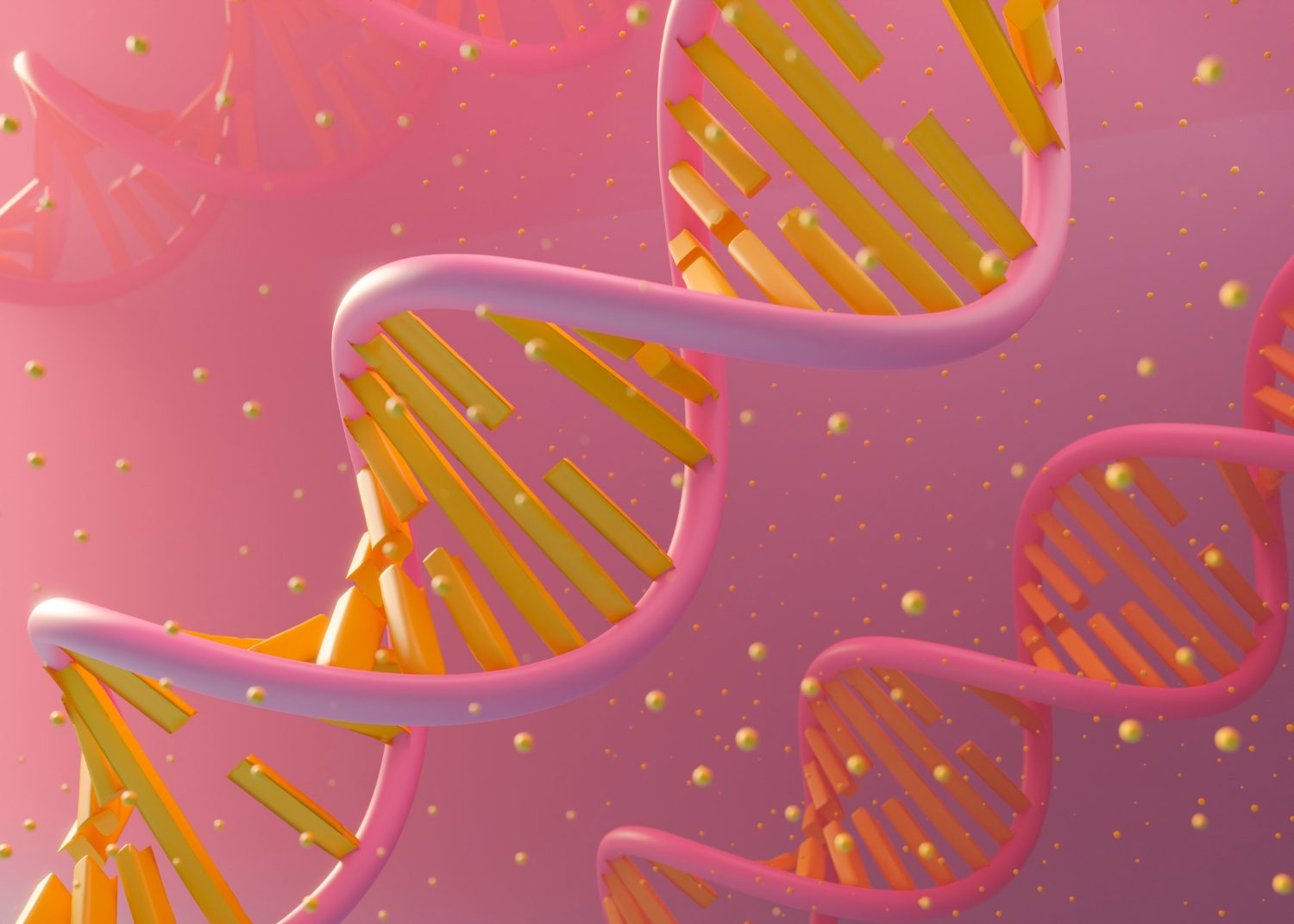Diese neuesten Entwicklungen in der Vorläuferzellentechnologie revolutionieren die Behandlung historisch schwieriger Krankheiten. Embryonale Stammzellen und multipotente medizinische Signalzellen spielen bei diesen Entdeckungen eine zentrale Rolle. Erstere besitzen die Fähigkeit, sich in verschiedene Zelltypen zu differenzieren, während letztere, die aus Knochenmark, Fettgewebe und Nabelschnur stammen, auf mesodermale Gewebe spezialisiert sind.
Die Stammzelltherapie umfasst ein breites Spektrum medizinischer Bereiche wie Neurologie, Lungenheilkunde, Endokrinologie, Dermatologie und Kardiologie, wobei die Fähigkeit der Stammzellen, sich selbst zu regenerieren und zu differenzieren, genutzt wird, um die Gewebereparatur zu erleichtern und Heilungsprozesse zu fördern. Die Sicherstellung einer validierten klinischen Praxis ist aufgrund der anhaltenden Bedenken hinsichtlich Sicherheit und Wirksamkeit nach wie vor von größter Bedeutung. Laufende Tests zielen darauf ab, MSC-Therapien zu optimieren, indem ihre einzigartigen Eigenschaften in verschiedenen Geweben untersucht werden, um den Weg für verfeinerte und gezielte Medikamentenstrategien zu ebnen.
Progenitorzellen: ein Überblick über die heutigen Aussagen und Forschungen
- Herz-Kreislauf- und Verdauungskrankheiten:
Vorläuferzellentherapien sind bei Herz-Kreislauf-Erkrankungen vielversprechend, aber Phase-III-Tests zeigen gemischte Ergebnisse, die eher auf eine Immunstimulierung als auf eine direkte Verjüngung hindeuten. Bei Verdauungskrankheiten wie Morbus Crohn zeigt die Behandlung mit hämatopoetischen Vorläuferzellen nur begrenzten Erfolg, während MSZ die Entzündung verringern, wobei jedoch Sicherheitsbedenken bestehen.
Vorläuferzellentherapien bieten Hoffnung für Lebererkrankungen wie Zirrhose und NAFLD, indem sie kurzfristige Marker und Funktionen verbessern. MSZ sind vielversprechend bei der Verringerung von Komplikationen, auch wenn es nach wie vor Probleme bei der Verabreichung und der Patientenauswahl gibt.
Die Frage der Vorläuferzellen bei Krebs umfasst autologe HSCTs und MSCs, die sich bei hämatologischen Malignomen als wirksam erwiesen haben. Die Wirksamkeit bei soliden Tumoren ist jedoch umstritten, da MSZ eine Doppelrolle bei der Förderung und Hemmung der Tumorproliferation spielen.
Der therapeutische Einsatz von embryonalen Stammzellen nimmt rasch zu.
Medizinische Signalzellen wurden erstmals vor 55 Jahren im Knochenmark von Mäusen identifiziert und können heute aus dem Gewebe von Patienten wie Fettgewebe, Nabelschnur und Knochenmark gewonnen werden.
Bei der Behandlung von erworbenen Hirn- und Rückenmarksverletzungen werden zunehmend BM-MSCs als zentrale Komponenten eingesetzt.
- Merkmale der medizinischen Signalzellen:
MSC unterschiedlicher Herkunft weisen unterschiedliche molekulare Profile und Differenzierungspotenziale auf. Aus Fettgewebe stammende MSZ weisen einen hohen CD49d- und einen niedrigen Stro-1-Gehalt auf, während MSZ aus dem Knochenmark erhöhte CD106- und CD133-Werte aufweisen, was ihre Funktion als Vorläuferzellen stärkt. MSC aus der Nabelschnur weisen einen hohen CD146-Gehalt auf, der eine starke Bindung und Proliferation fördert. Funktionell zeichnen sich BM-MSCs durch eine osteogene und chondrogene Differenzierung aus, AT-MSCs durch eine adipogene Differenzierung und UC-MSCs durch eine robuste osteogene Fähigkeit, die der von BM-MSCs überlegen ist.
- Lieferung und Auswirkungen der Medikation:
Die Art der Verabreichung von MSC hat einen erheblichen Einfluss auf die Biodistribution und die Ergebnisse der Medikation. Die intravenöse Verabreichung zielt zunächst auf die Lunge ab, bevor sie umverteilt wird, was ideal für lungenspezifische Probleme ist. Lokale Injektionen erleichtern die gewebespezifische Ansiedlung; so werden MSC beispielsweise durch Injektionen in die Nierenarterie zur Nierenrinde geleitet. Tracking-Studien zeigen, dass MSC in Knochen, Milz, Muskeln und Knorpel verbleiben, was einen besseren Einblick in ihre medikamentöse Wirksamkeit bei verschiedenen Krankheiten ermöglicht.
- Klinische Anwendungen bei neurodegenerativen Erkrankungen:
MSC, die aus BM, AT und UC stammen, sind vielversprechend für die Behandlung von neurodegenerativen Erkrankungen wie Schlaganfall, Rückenmarksverletzungen, Zerebralparese und Autismus. BM-MSCs zeigen Sicherheit und bescheidene klinische Verbesserungen bei Schlaganfall und SCI, während sowohl BM-MSCs als auch UC-MSCs die motorischen Funktionen bei Zerebralparese verbessern. Weitere Forschung ist erforderlich, um die Protokolle zu optimieren und die Wirkmechanismen zu klären, damit die Ergebnisse standardisiert werden können.
Medizinische Signalzellen aus Fettgewebe, Knochenmark und Nabelschnur zeigten unterschiedliche molekulare Profile und Differenzierungspotenziale. AT-MSCs begünstigen die adipogene Differenzierung, BM-MSCs zeichnen sich durch osteogene und chondrogene Fähigkeiten aus und weisen erhöhte CD106- und CD133-Werte auf, während UC-MSCs eindeutig CD146 exprimieren, was ihr osteogenes Potenzial erhöht. Die Art der Verabreichung hat erheblichen Einfluss auf die Ergebnisse der Medikation, wobei die intravenöse Verabreichung zunächst auf die Lunge abzielt und lokale Injektionen die gewebespezifische Ansiedlung erleichtern. Bei neurodegenerativen Erkrankungen wie Schlaganfall, Rückenmarksverletzungen, Zerebralparese und Autismus sind BM-MSCs und UC-MSCs vielversprechend, doch bedarf es weiterer Forschung, um die Protokolle zu optimieren und ihre Mechanismen für standardisierte klinische Anwendungen zu verstehen.
UC-MSCs bei Atemproblemen und Lungenfibrose:
MSCs aus der Nabelschnur werden zunehmend für ihr Potenzial bei der Behandlung von Atemwegserkrankungen wie BPD, COPD, ARDS und COVID-19-induziertem ARDS anerkannt. Sie weisen eine geringere MHC-I-Expression auf, was das Risiko einer Immunabstoßung verringert, und lassen sich nach der Geburt leicht kultivieren. UC-MSCs wirken immunstimulierend, interagieren über PD-L1 und CD54 mit Immunzellen und reagieren auf SDF-1, um die Ansiedlung in der Lunge und die Modulation von Entzündungen zu fördern. Sie helfen bei der Angiogenese, hemmen die Fibrose und stellen die Lungenfunktion wieder her, indem sie vermehrt Faktoren wie VEGF und HGF absondern.
Signalzellen aus Knochenmark und Medikamenten bei erworbenen Hirn- und Wirbelsäulenverletzungen:
Aus dem Knochenmark stammende medizinische Signalzellen bieten vielversprechende Mechanismen zur Behandlung von erworbenen Hirn- und Rückenmarksverletzungen. Sie erhalten die Nischen der hämatopoetischen Vorläuferzellen aufrecht, indem sie Faktoren wie CXCL12, SCF und Ang-1 absondern, die für die vom sympathischen Nervensystem beeinflusste HSC-Regulierung entscheidend sind. BM-MSCs unterstützen die neuronale Abwehr durch SDF-1 und fördern das Überleben und die Verjüngung. Trotz der Schwierigkeiten, die Blut-Hirn-Schranke zu überwinden, tragen BM-MSCs zur Integrität der BHS bei, unterstützen die Verjüngung des Nervensystems und stimulieren das Immunsystem, was bei neurologischen Erkrankungen von Vorteil ist.
Fettgewebe – MSCsin Endokrinologische Erkrankungen, Fortpflanzungsstörungen und Hautverbrennungen:
Aus Fettgewebe gewonnene MSZ spielen eine wichtige Rolle bei der Behandlung von endokrinologischen Erkrankungen, reproduktiven Krankheiten wie vorzeitigem Eierstockversagen und chronischen Hautwunden. Bei POF wandern AT-MSCs zu geschädigten Eierstöcken, unterstützen die Follikelproliferation und lindern Entzündungen durch die Erhöhung von Faktoren wie HGF und VEGF. Bei Hautwunden beschleunigen AT-MSCs die Heilung, indem sie sich in hautspezifische Zellen differenzieren, heilungsfördernde Exosome produzieren und Entzündungs- und Gewebsverjüngungswege modulieren.
Jede Art von MSZ verfügt über einzigartige medikamentöse Fähigkeiten und kann durch unterschiedliche Mechanismen, die auf ihre Quelle und Anwendung zugeschnitten sind, spezifische medizinische Probleme lösen.
MSC-basierte Medikamente stehen vor mehreren Herausforderungen, die für ihre breitere Anwendung und Wirksamkeit gelöst werden müssen.
In den letzten Jahrzehnten wurden bedeutende Fortschritte bei der MSC-basierten Medikation erzielt, wobei Vorteile wie die Umgehung des Immunsystems, die einfache Isolierung und die Verfügbarkeit „von der Stange“ genutzt wurden. Trotz dieser Fortschritte gibt es immer noch Herausforderungen. Das Verständnis des Verbleibs von MSZ nach der Verabreichung, insbesondere des langfristigen Überlebens und möglicher Risiken wie Embolie und Entzündungsreaktionen, ist nach wie vor von entscheidender Bedeutung. Von zentraler Bedeutung sind auch die Optimierung der Homing-Fähigkeit und die Beseitigung von Bedenken hinsichtlich des Vorhandenseins toter Zellen in den Präparaten. Darüber hinaus beeinflusst die Auswahl der idealen MSC-Quellen die klinische Wirksamkeit erheblich. Die Bewältigung dieser komplexen Probleme ist für die Verbesserung von MSC-Medikamenten von entscheidender Bedeutung, auch wenn Probleme wie Verzerrungen bei Tests in medizinischen Zentren und unzureichende Meta-Analysen zusammen mit Kontroversen über Namenskonventionen und widersprüchliche Ergebnisse den Fortschritt noch behindern. Darüber hinaus ist eine breitere Erforschung von Krankheiten jenseits von neurologischen, pulmonalen, kardiovaskulären und endokrinologischen Erkrankungen sowie von Aspekten wie MSC-Sekretomen und Priming-Strategien für einen umfassenden Fortschritt erforderlich.
Am Ende
Die Entwicklung von Medikamenten aus medizinischen Signalzellen stellt eine neue Grenze in der Medizin dar und bietet vielversprechende Lösungen für historisch schwierige Krankheiten in verschiedenen medizinischen Disziplinen. Aus Fettgewebe, Knochenmark und Nabelschnur gewonnene MSZ weisen unterschiedliche Eigenschaften und Differenzierungspotenziale auf, die auf den spezifischen Bedarf an Medikamenten abgestimmt sind – von neurodegenerativen Erkrankungen bis hin zu Atemwegserkrankungen und darüber hinaus. Diese Zellen verfügen nicht nur über den Prozess der Differenzierung in verschiedene Zelltypen, die für die Gewebereparatur entscheidend sind, sondern üben auch starke immunmodulatorische und verjüngende Wirkungen aus.
Bei der Maximierung der Sicherheit, Wirksamkeit und Standardisierung von MSC gibt es jedoch noch erhebliche Hürden. Herausforderungen wie die Optimierung der Verabreichungswege für eine optimale Biodistribution, das Verständnis des Langzeitüberlebens nach der Verabreichung und die Bewältigung potenzieller unerwünschter Reaktionen wie Entzündungsreaktionen erfordern weitere Untersuchungen und Verbesserungen. Um die klinische Praxis voranzubringen, müssen außerdem Verzerrungen bei den Studienmethoden überwunden, die Namenskonventionen standardisiert und die Forschung auf ein breiteres Spektrum von Krankheiten und innovative MSC-Einsätze ausgeweitet werden. Wenn diese komplexen Probleme durch rigorose Forschung und klinische Validierung angegangen werden, können MSC-Medikamente ihr enormes Potenzial entfalten und die Patientenversorgung und die Behandlungsergebnisse weltweit revolutionieren.











